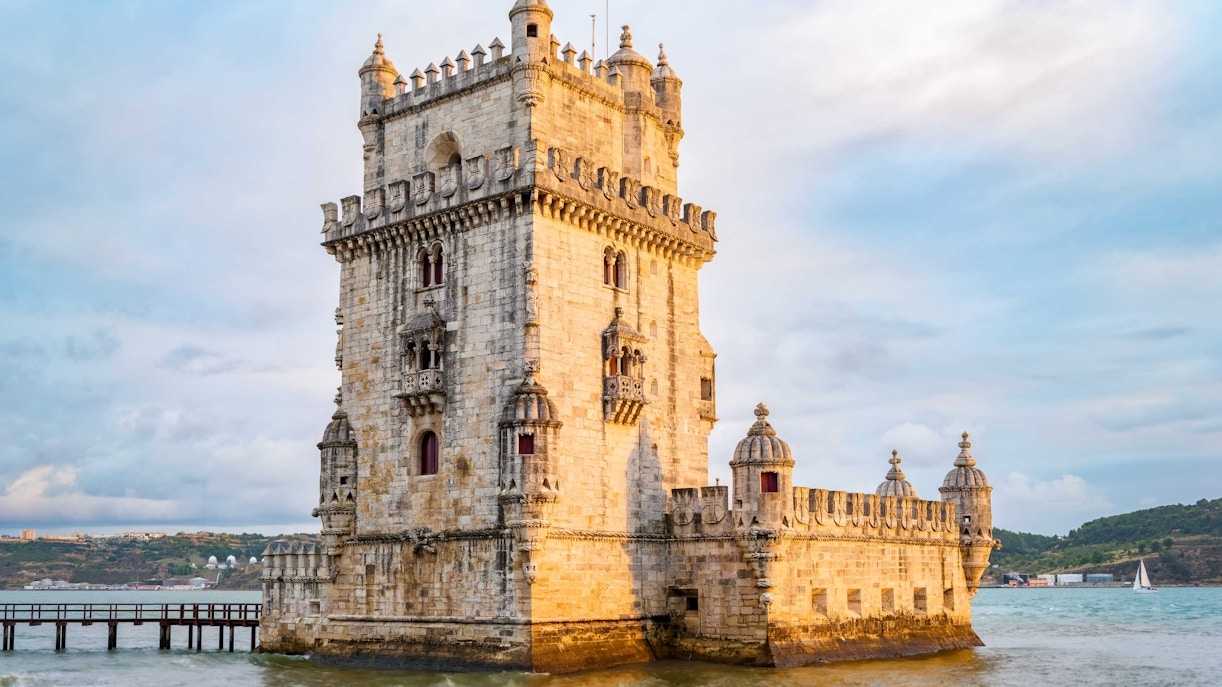Exploring Lisbon’s Iconic Belem Tower
Lisbon, the vibrant capital of Portugal, is home to many historical landmarks, but few are as iconic as the Belem Tower. This architectural gem, officially known as the Tower of St. Vincent, stands proudly on the northern bank of the Tagus River. Built in the early 16th century, it has become a symbol of Portugal’s Age of Discoveries. Whether you’re a history buff or simply looking to explore Lisbon’s rich cultural heritage, a visit to Belem Tower is a must.
A Glimpse into History
Belem Tower was constructed between 1514 and 1520 during the reign of King Manuel I. It was originally designed as a fortress to protect Lisbon from sea attacks and as a ceremonial gateway to the city. The tower is a prime example of the Manueline architectural style, which is characterized by intricate maritime motifs, including ropes, knots, and crosses. This style reflects Portugal’s seafaring prowess during the Age of Discoveries.
The tower played a crucial role in the defense of Lisbon and was part of a tripartite defense system along with the nearby Fort of São Sebastião da Caparica and the Tower of Cascais. Over the centuries, it has served various purposes, including a customs outpost, a telegraph station, and even a lighthouse. In 1983, Belem Tower was declared a UNESCO World Heritage Site, recognizing its historical and cultural significance.
What to See and Do
When visiting Belem Tower, you’ll be greeted by its stunning exterior, which features a blend of Gothic and Moorish architectural elements. The tower is adorned with ornate balconies, battlements, and a statue of Our Lady of Safe Homecoming, a tribute to the sailors who embarked on perilous voyages.
Inside, the tower consists of several levels, each offering a unique perspective on its history and architecture. The ground floor houses a small museum with exhibits detailing the tower’s history and its role in Portugal’s maritime past. As you ascend the narrow spiral staircase, you’ll reach the King’s Chamber, which offers panoramic views of the Tagus River and the surrounding area.
One of the highlights of the visit is the terrace at the top of the tower. From here, you can enjoy breathtaking views of the river, the 25 de Abril Bridge, and the nearby Jerónimos Monastery. It’s a perfect spot for photography enthusiasts looking to capture the beauty of Lisbon’s waterfront.
Visitor Tips
To make the most of your visit to Belem Tower, consider these practical tips:
- Timing: The tower can get crowded, especially during peak tourist season. To avoid long lines, try to visit early in the morning or later in the afternoon. The tower is open from 10:00 AM to 5:30 PM (October to April) and until 6:30 PM (May to September).
- Tickets: You can purchase tickets at the entrance, but for a hassle-free experience, consider buying them online in advance. This will save you time and ensure you don’t miss out on this popular attraction.
- Accessibility: Belem Tower is not fully accessible to those with mobility issues due to its narrow staircases and steep steps. However, the surrounding area is wheelchair-friendly, and you can still enjoy the exterior views.
- Nearby Attractions: While in Belem, take the opportunity to explore other nearby attractions. The Jerónimos Monastery, another UNESCO World Heritage Site, is just a short walk away. Don’t miss the chance to try the famous Pastéis de Belém, a delicious Portuguese custard tart, at the nearby bakery.
- Weather: Lisbon enjoys a mild climate, but it’s always a good idea to check the weather forecast before your visit. Bring a light jacket or sweater, as it can get breezy near the river.
Belem Tower is more than just a historical monument; it’s a testament to Portugal’s rich maritime heritage and a window into the past. Whether you’re captivated by its architectural beauty or intrigued by its storied history, a visit to this iconic landmark is sure to be a memorable experience.
